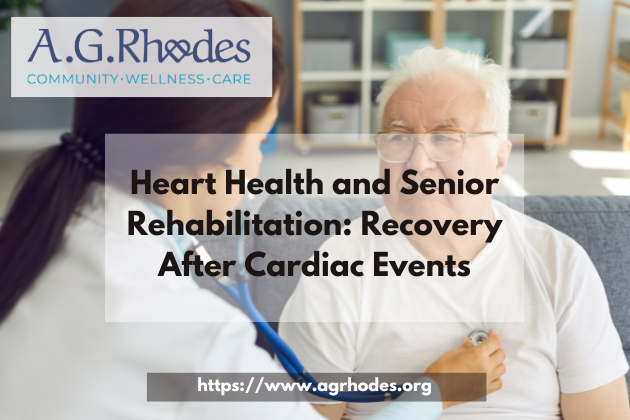 A strong heart sustains a vibrant life, yet as the body ages, the risk of cardiac complications rises significantly. For seniors, a heart event—be it a heart attack, stroke, or heart failure—can be life-altering, demanding focused recovery efforts. Rehabilitation becomes an essential journey, blending medical expertise, lifestyle changes, and emotional resilience. Understanding the intricacies of cardiac rehabilitation can empower seniors and their families to navigate the road to recovery with confidence and clarity.
A strong heart sustains a vibrant life, yet as the body ages, the risk of cardiac complications rises significantly. For seniors, a heart event—be it a heart attack, stroke, or heart failure—can be life-altering, demanding focused recovery efforts. Rehabilitation becomes an essential journey, blending medical expertise, lifestyle changes, and emotional resilience. Understanding the intricacies of cardiac rehabilitation can empower seniors and their families to navigate the road to recovery with confidence and clarity.
Common Cardiac Events in Seniors
The heart, a resilient yet delicate organ, faces multiple challenges in later years. A myocardial infarction, commonly known as a heart attack, occurs when blood flow to the heart is obstructed, often by plaque buildup. Similarly, stroke, though primarily a neurological event, has deep ties to cardiovascular health, typically stemming from arterial blockages or hemorrhages. Conditions like heart failure—where the heart struggles to pump efficiently—and arrhythmias, marked by irregular heart rhythms, further complicate cardiac well-being in seniors. Each of these conditions necessitates targeted rehabilitation to restore function and prevent further damage.
The Importance of Timely Rehabilitation
Time is a crucial element in post-cardiac recovery. The sooner rehabilitation begins, the higher the likelihood of regaining strength and reducing complications. Prompt intervention helps prevent secondary heart events, improves physical function, and enhances overall quality of life. A structured rehabilitation plan mitigates risk factors, ensuring a smoother transition from critical care to independent living.
Phases of Cardiac Rehabilitation
- Phase I: In-Hospital Recovery and Stabilization
- Initiates immediately after a cardiac event
- Focuses on vital sign stabilization and initial mobility
- Includes basic education on heart health
- Phase II: Supervised Outpatient Rehabilitation
- Involves monitored physical therapy and lifestyle counseling
- Gradual reintroduction to physical activity
- Medication management and dietary guidance
- Phase III: Long-Term Maintenance and Lifestyle Modifications
- Encourages sustained heart-healthy habits
- Continual exercise, balanced nutrition, and routine check-ups
- Psychological support for long-term adherence
Medical Supervision and Monitoring
Recovering from a cardiac event requires meticulous medical oversight. Cardiologists and rehabilitation specialists assess progress using tools like electrocardiograms (ECG) to monitor heart rhythms, stress tests to evaluate exercise tolerance, and echocardiograms to visualize heart function. Regular assessments allow for adjustments in treatment plans, ensuring safety and efficiency in rehabilitation.
Physical Activity and Strength Rebuilding
Movement is medicine, but for seniors recovering from cardiac events, it must be approached with caution. Low-impact exercises such as walking, chair yoga, and aquatic therapy strengthen the heart without overexertion. Physiotherapists play a critical role in guiding patients through safe, progressive activity regimens, ensuring exertion aligns with individual capabilities. Proper pacing—balancing effort with rest—is key to avoiding strain and maximizing recovery.
Dietary Adjustments for Cardiovascular Recovery
Nutrition acts as a cornerstone of cardiac rehabilitation. Foods rich in omega-3 fatty acids, fiber, and antioxidants support heart function, while excessive sodium, trans fats, and refined sugars exacerbate cardiovascular risks. Hydration is equally critical, as dehydration can strain the heart, leading to fluctuations in blood pressure and circulation. A carefully curated diet helps sustain cardiac resilience and promotes overall well-being.
Mental and Emotional Well-being Post-Cardiac Event
A cardiac event is not merely a physical ordeal—it also impacts mental health. Many seniors experience anxiety, depression, or PTSD following a heart episode. Support groups, therapy, and counseling provide essential coping mechanisms. Practices such as mindfulness meditation, breathing exercises, and cognitive behavioral therapy help mitigate stress, fostering a more positive rehabilitation experience.
Medications and Ongoing Treatment
Pharmaceutical intervention plays a crucial role in post-cardiac care. Beta-blockers, anticoagulants, and statins are commonly prescribed to regulate blood pressure, prevent clotting, and manage cholesterol levels. Adhering to prescribed medications is essential, as skipping doses can elevate the risk of recurrent heart issues. Awareness of potential side effects ensures proactive management of drug interactions and complications.
Preventive Strategies to Avoid Future Cardiac Events
Prevention is the ultimate safeguard against repeat cardiac events. Routine health screenings, including blood pressure monitoring and cholesterol checks, allow for early intervention. Smoking cessation, alcohol moderation, and improved sleep hygiene further contribute to heart longevity. A proactive approach to cardiovascular care fosters resilience and enhances overall vitality.
The Role of Family and Caregivers
Recovery is not a solitary endeavor—family and caregivers serve as pillars of support. Encouraging attendance at rehabilitation sessions, assisting with meal preparation, and fostering a stress-free environment all contribute to successful recovery. Recognizing early signs of complications, such as chest discomfort, unusual fatigue, or dizziness, ensures timely medical intervention.
Conclusion
The journey to recovery after a cardiac event requires patience, persistence, and a multi-faceted approach. By integrating structured rehabilitation, medical supervision, dietary enhancements, and mental wellness strategies, seniors can reclaim their independence and enjoy a fulfilling, heart-conscious lifestyle. With dedication to long-term heart health, the golden years can be vibrant, active, and enriched with newfound resilience.

